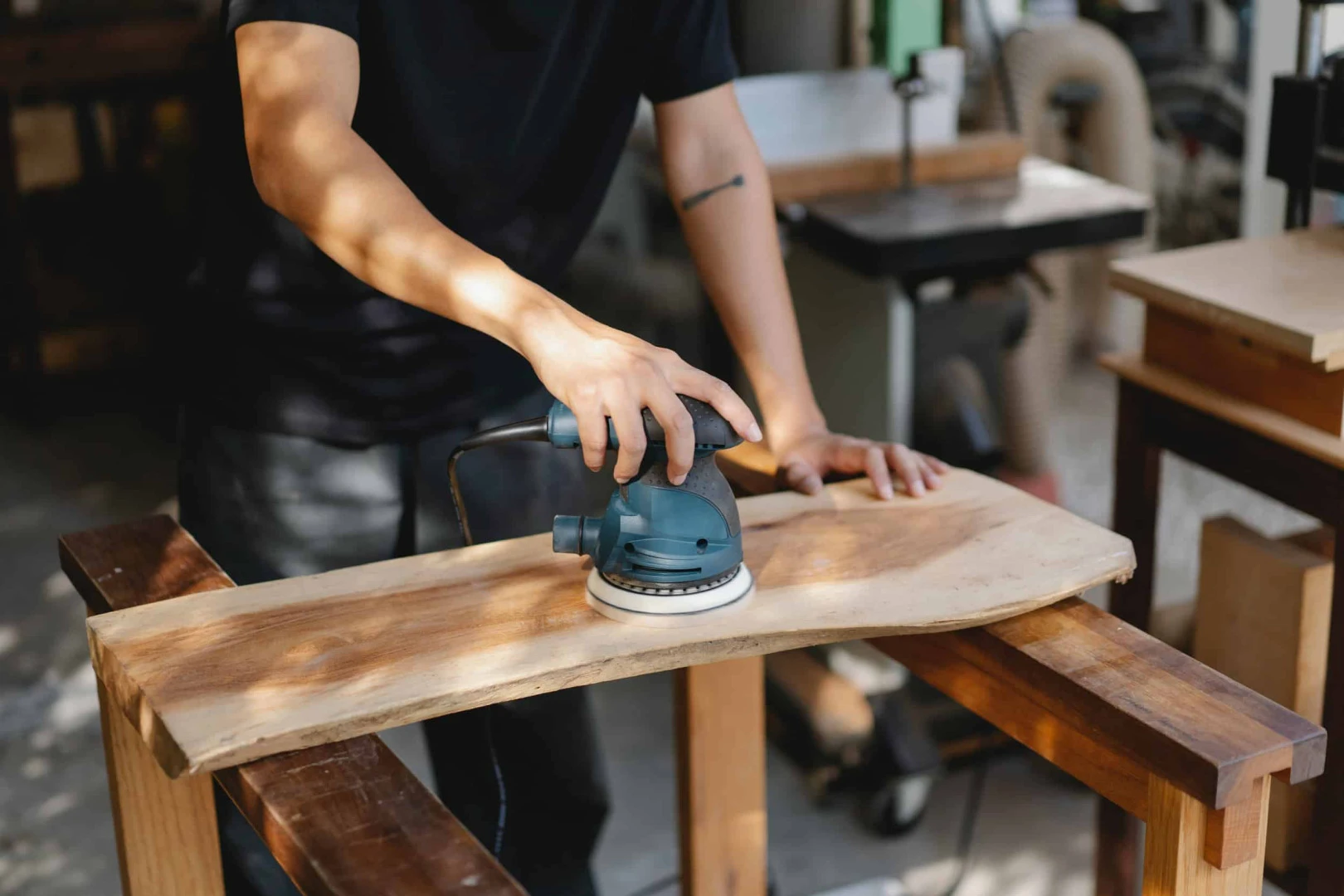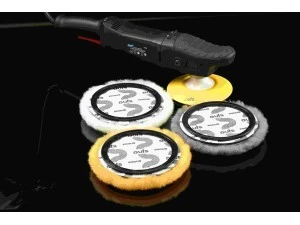Furniture masters share the secrets of reviving old wooden surfaces. The polishing method is particularly effective for renewing the appearance of aged furniture. This technique not only reveals the natural beauty within the depths of the wood but also provides protection. Over time, worn and weathered wooden surfaces regain life through polishing. This process extends the furniture’s lifespan while making it more aesthetically appealing. Especially considering the current popularity of wooden furniture, the importance of polishing methods becomes even more evident. With the right techniques and applications, even your old furniture can look brand new. In this article, we will discuss the advantages of polishing and how it should be applied.
Signs of Aging on Wooden Surfaces
Wooden surfaces show signs of aging in various ways over time. These signs reveal the age of the furniture and how much it has been used. Dulling occurs when the surface loses its initial glossy appearance, often due to abrasive cleaners. Color fading, on the other hand, results from exposure to sunlight, leading to uneven tones on the surface. Visible scratches and stains occur during daily use and can be aesthetically disturbing. Additionally, the wearing of the varnish and polish layer leaves the wood vulnerable to external factors. This erosion can cause further damage over time. Therefore, it is important to identify and restore aged wooden surfaces early.
Dulling and Color Fading
Dulling and color fading are the most common signs of aging on wooden surfaces. Dulling is the loss of surface gloss and the development of a rough texture, typically caused by the wearing of the polish layer. Over time, due to heavy use and improper cleaning products, wooden surfaces lose their shine. Color fading occurs as a result of exposure to sunlight. UV rays affect the color of wood fibers, disrupting its appearance. These two issues reduce the aesthetic appeal of wooden surfaces and make them look old. Therefore, regular maintenance and polishing play a major role in preventing dulling and fading, preserving the wood’s beauty.
Scratches and Stains on the Surface
Scratches and stains on wooden surfaces are inevitable results of daily life. Scratches usually occur from sharp objects or excessive pressure, damaging the surface integrity. Stains come from spilled liquids, especially oil- or water-based substances, and are more problematic due to the absorbent nature of wood. Such stains can become permanent over time and negatively affect the appearance. Scratches and stains make furniture look old and poorly maintained. Therefore, regular cleaning and polishing of surfaces are crucial. With proper care methods, wooden surfaces can be revived and regain their original beauty.
Wearing of Varnish and Polish Layers
The wearing of varnish and polish layers is one of the biggest threats to wooden surfaces. These layers protect the wood from external elements while providing an aesthetic look. Over time, heavy use, sunlight, and improper cleaning products cause the varnish and polish layers to wear off. When these layers erode, the wood becomes vulnerable to water, dirt, and other damaging substances. As a result, the surface shows aging signs more quickly and requires more frequent maintenance. Therefore, the condition of the varnish and polish layer should be checked regularly and renewed when necessary. This not only extends the lifespan of wooden furniture but also enhances its appearance.
Suitable Polishing Methods for Wooden Surfaces
Choosing the right methods when polishing wooden surfaces is extremely important. Proper techniques help rejuvenate and protect the surface for a long time. First, the surface should not be sanded immediately; it should be carefully prepared using the appropriate sandpaper for the wood type. Manual polishing is ideal for small areas—sanding-supported cleaning can remove dull areas effectively. Machine polishing, on the other hand, is a time-saving method for larger surfaces. When used with the right polishing compound, it enhances the wood’s gloss and gives it a renewed look. In addition, it is essential to follow predefined steps to remove stains and scratches. Using these methods, wooden surfaces can regain their original beauty and become more appealing.
Manual Polishing and Sanding-Supported Cleaning
Manual polishing is an effective method for renewing wooden surfaces. This technique helps remove dull and worn-out areas using sandpaper. First, the wooden surface should be cleaned and prepared for sanding. Sanding removes the old polish and varnish layers, revealing the natural look of the wood. Then, manual polishing with lambskin polishing pads can be performed to restore shine. This method is especially preferred for furniture requiring detailed craftsmanship, as manual polishing provides more control and ensures even application across the surface. As a result, the wood gains a healthier and more aesthetic appearance.
Machine Polishing Techniques
Machine polishing techniques are ideal for quickly and effectively renewing wooden surfaces. This method uses special polishing machines that rapidly remove dullness and restore shine. First, dust and dirt should be cleaned off the surface, followed by appropriate sanding. After sanding, a recommended polishing compound should be applied for machine use. This process enhances the wood’s gloss and creates a smoother appearance. Machine polishing not only saves time but also ensures a uniform and visually pleasing result. Therefore, selecting the right machines and materials is crucial for successful polishing.
Steps for Removing Stains and Scratches
Several steps should be followed to remove stains and scratches from wooden surfaces. First, ensure the surface is clean—this enhances the effectiveness of stain removal. Second, for minor scratches, scratch-remover pens or products can be used. For deeper scratches, sanding may be required. When dealing with stains, methods should be chosen based on the type of stain. For instance, water-based stains should be wiped immediately, while oil-based stains require special detergents. In some cases, polishing may also be necessary to fully remove stains. By carefully following these steps, wooden surfaces can regain a smooth and clean appearance.
Step-by-Step Restoration Process
The polishing and restoration process of wooden surfaces consists of specific stages. The first step is cleaning and preparing the surface, which increases the effectiveness of polishing. It is important to remove dust, dirt, and stains from the surface. The second stage is the polishing application, where the appropriate sandpaper and polishing products are used to gradually revive the surface. Finally, a protective polish is applied as the finishing touch. The polish not only protects the surface but also enhances its appearance. When these steps are followed in order, even aged wooden surfaces can be rejuvenated and made visually stunning. Thus, furniture achieves both aesthetic and durability improvements.
Cleaning and Preparing the Surface
Cleaning and preparing the surface is the most important step in wood restoration. This step directly affects the efficiency of polishing. First, all dirt, dust, and residue on the wooden surface should be carefully cleaned. A damp cloth and appropriate cleaners can be used for this process. Once cleaning is complete, the surface must be completely dry. If stains remain, they should be treated with specialized stain removers. After preparation, sanding can begin. The appropriate sandpaper should be selected based on the condition of the wood. This creates an ideal base for the subsequent polishing process.
Polishing Application: Layer-by-Layer Revitalization
Polishing is the most satisfying stage of renewing wooden surfaces. This process is done using a layer-by-layer revitalization technique, giving the surface deep gloss. First, apply the appropriate polishing compound to the pre-sanded and prepared surface. The product should be chosen according to the wood type. Polishing machines or pads can be used during application, ensuring even distribution across the surface. After the first layer is applied, allow the product to dry. Then, a second layer may be applied if needed. These layers strengthen the appearance of the wooden surface and enhance its aesthetics. In the end, the surface gains a beautiful shine and an eye-catching look.
Finishing Touch with Protective Polish
The application of protective polish is the final and most important stage of wood restoration. Polish protects the surface from external factors while adding aesthetic appeal. Once polishing is complete, ensure the surface is completely clean and dry. Then, select a suitable polish and apply it carefully. Typically, a brush or roller is used to achieve a uniform layer. After application, allow sufficient drying time, keeping the surface clean during this period. Protective polish extends the lifespan of wooden surfaces and reduces maintenance needs. As a result, renewed wooden furniture remains beautiful and durable for a long time.




